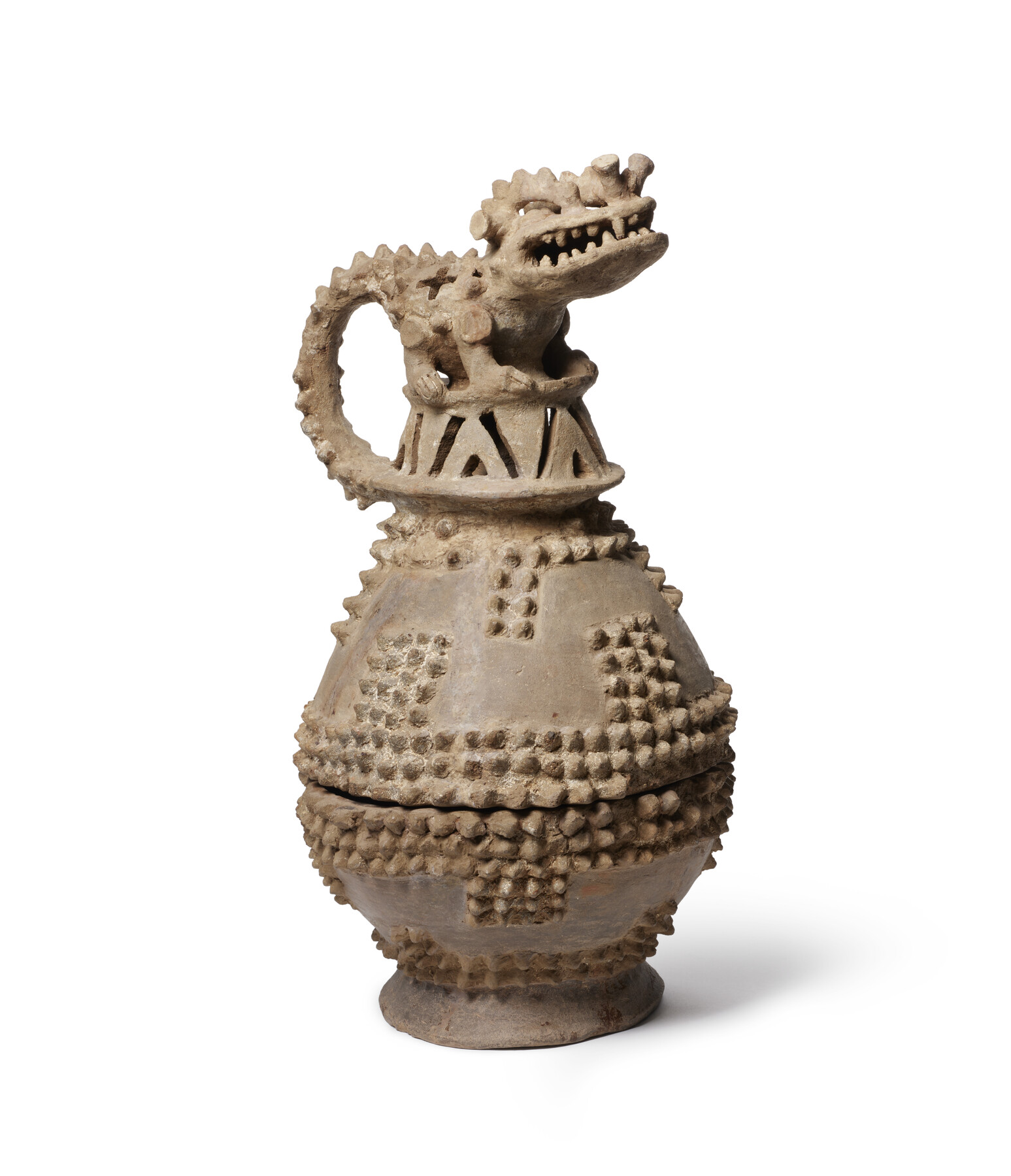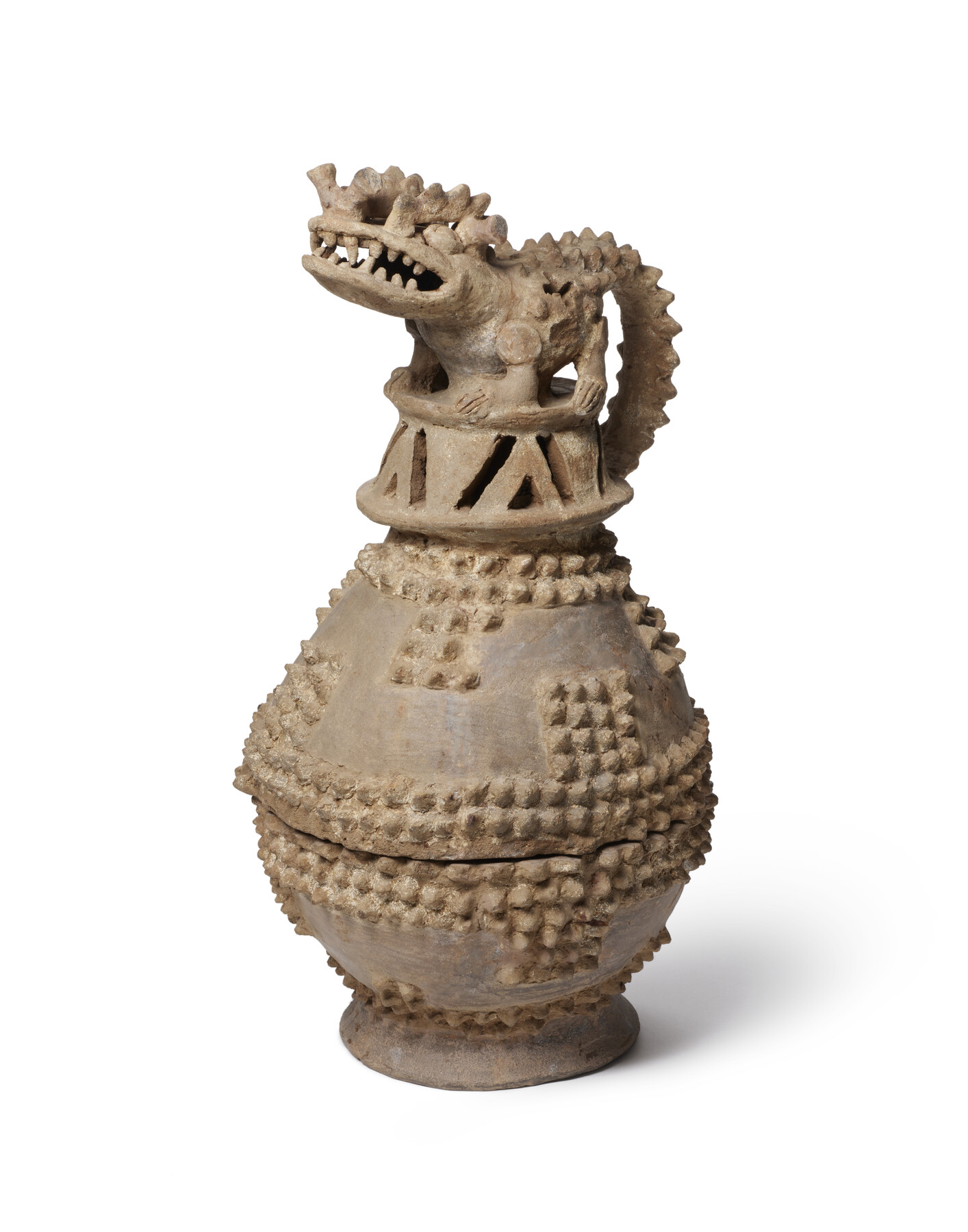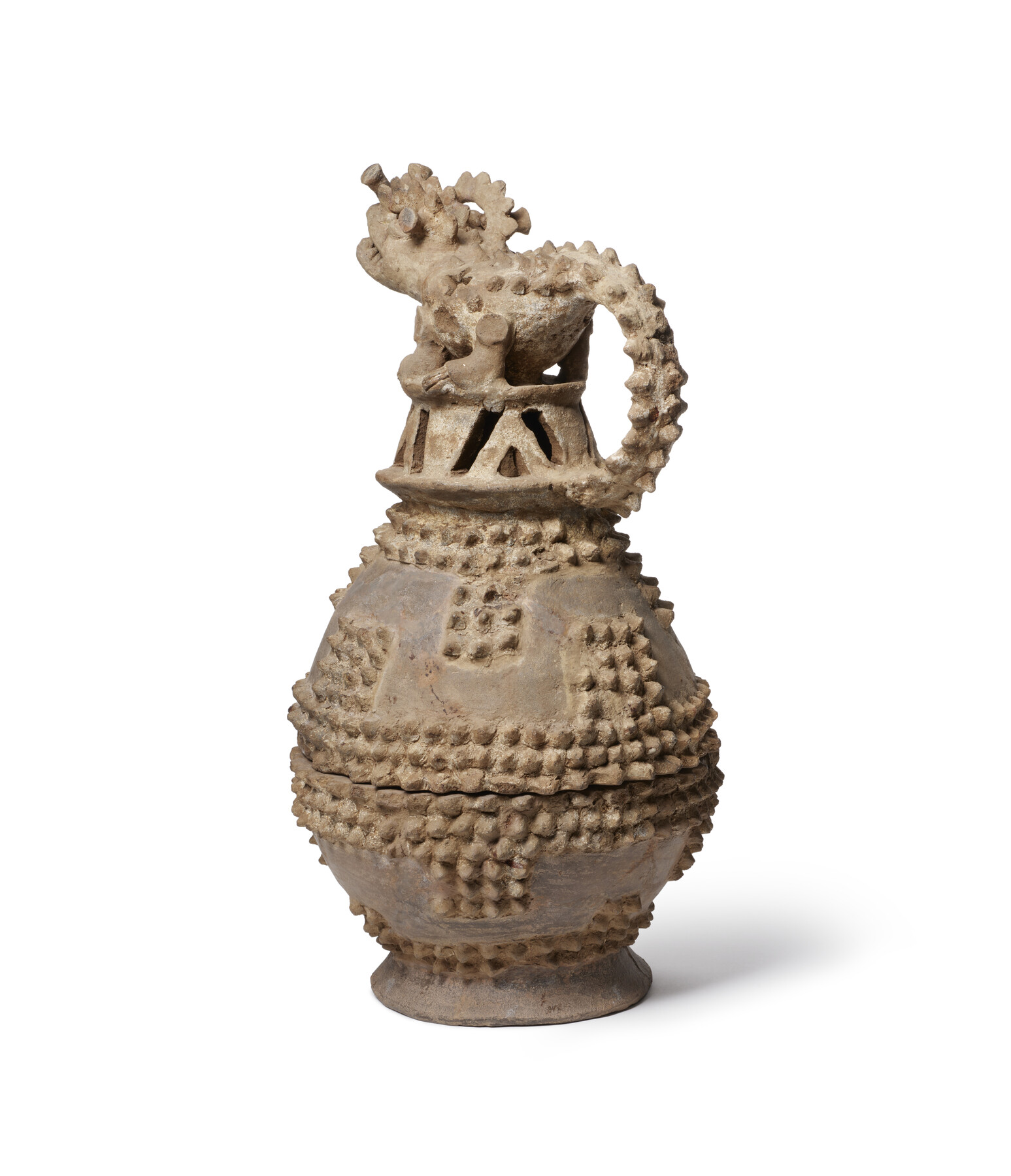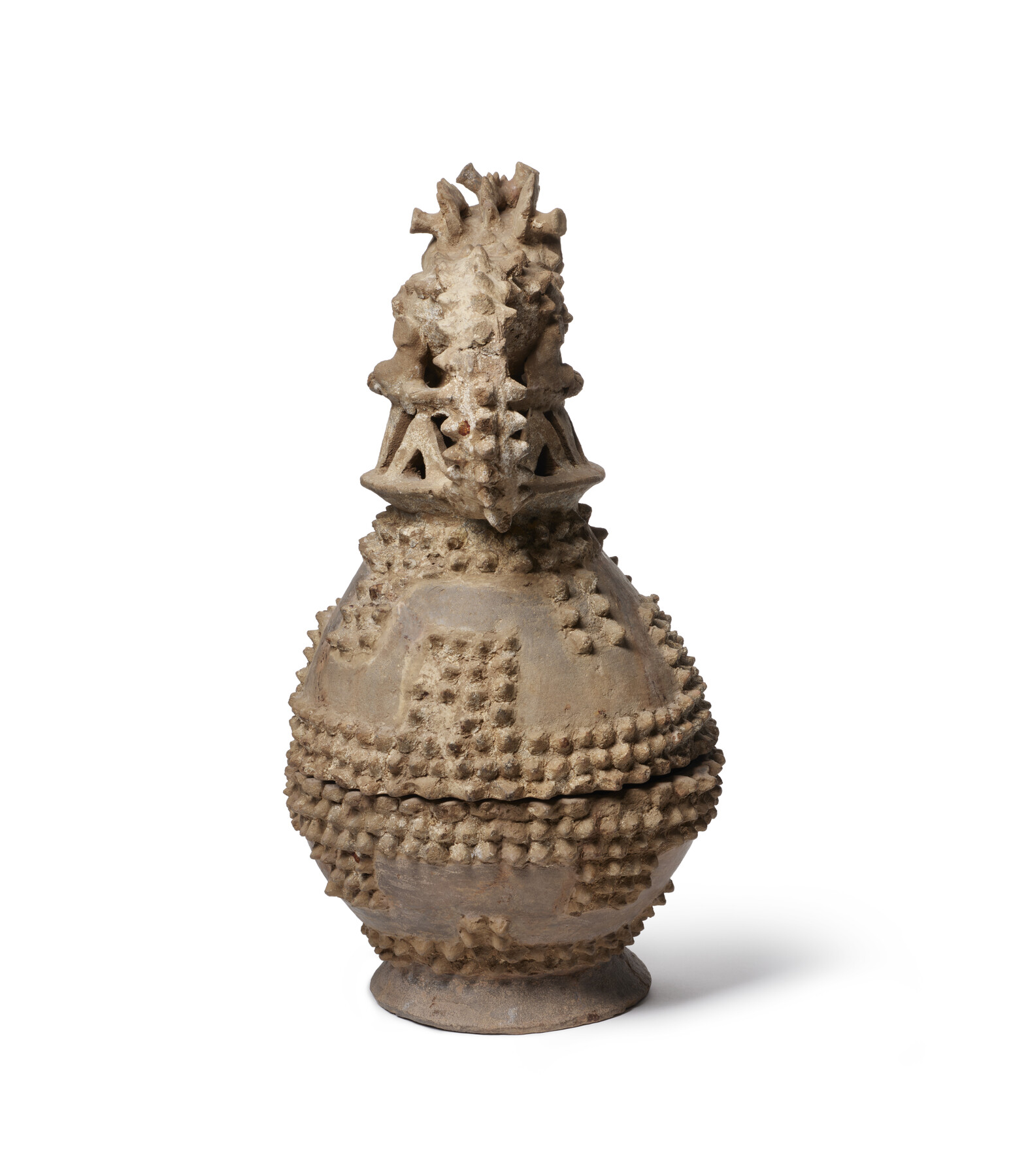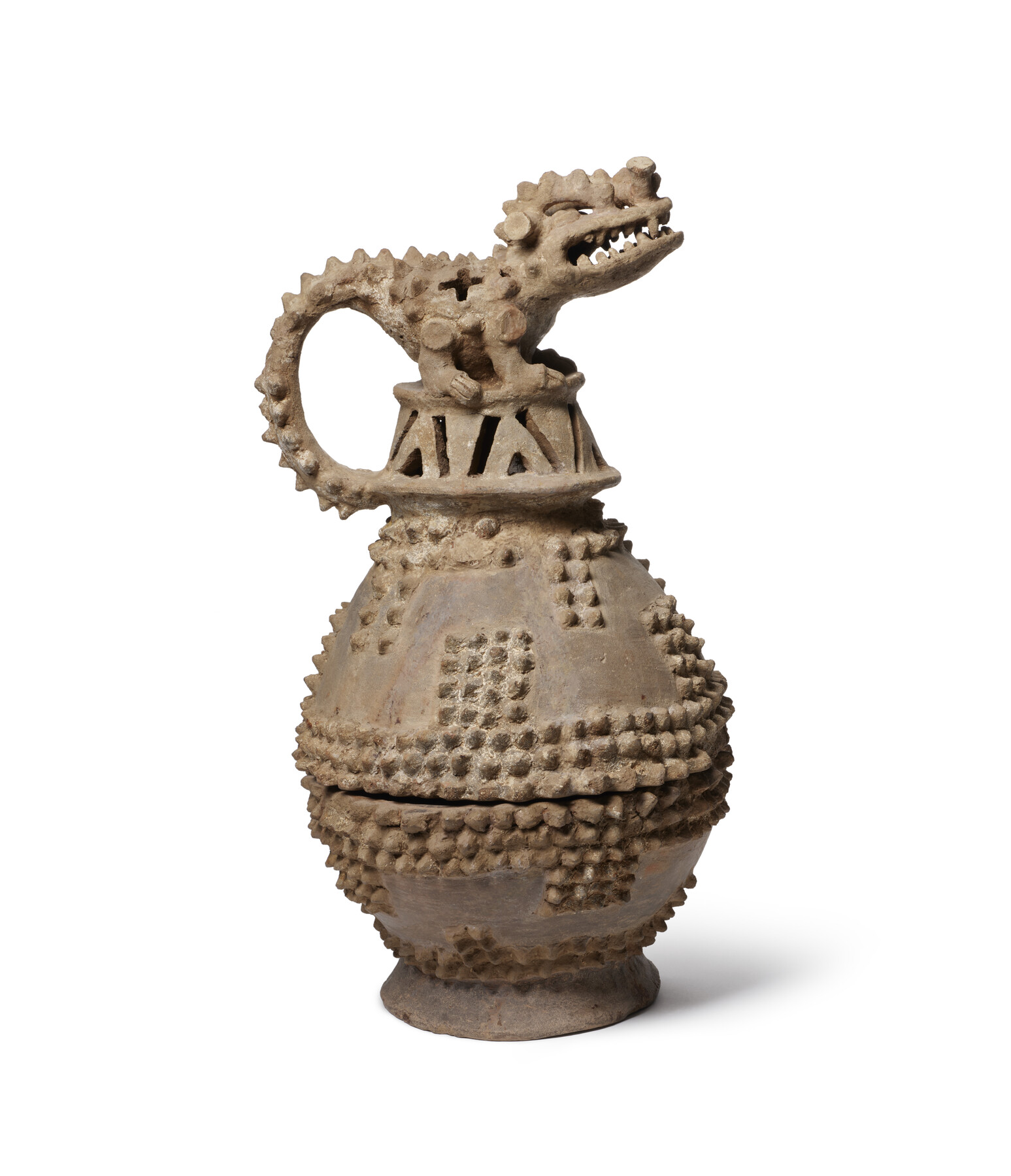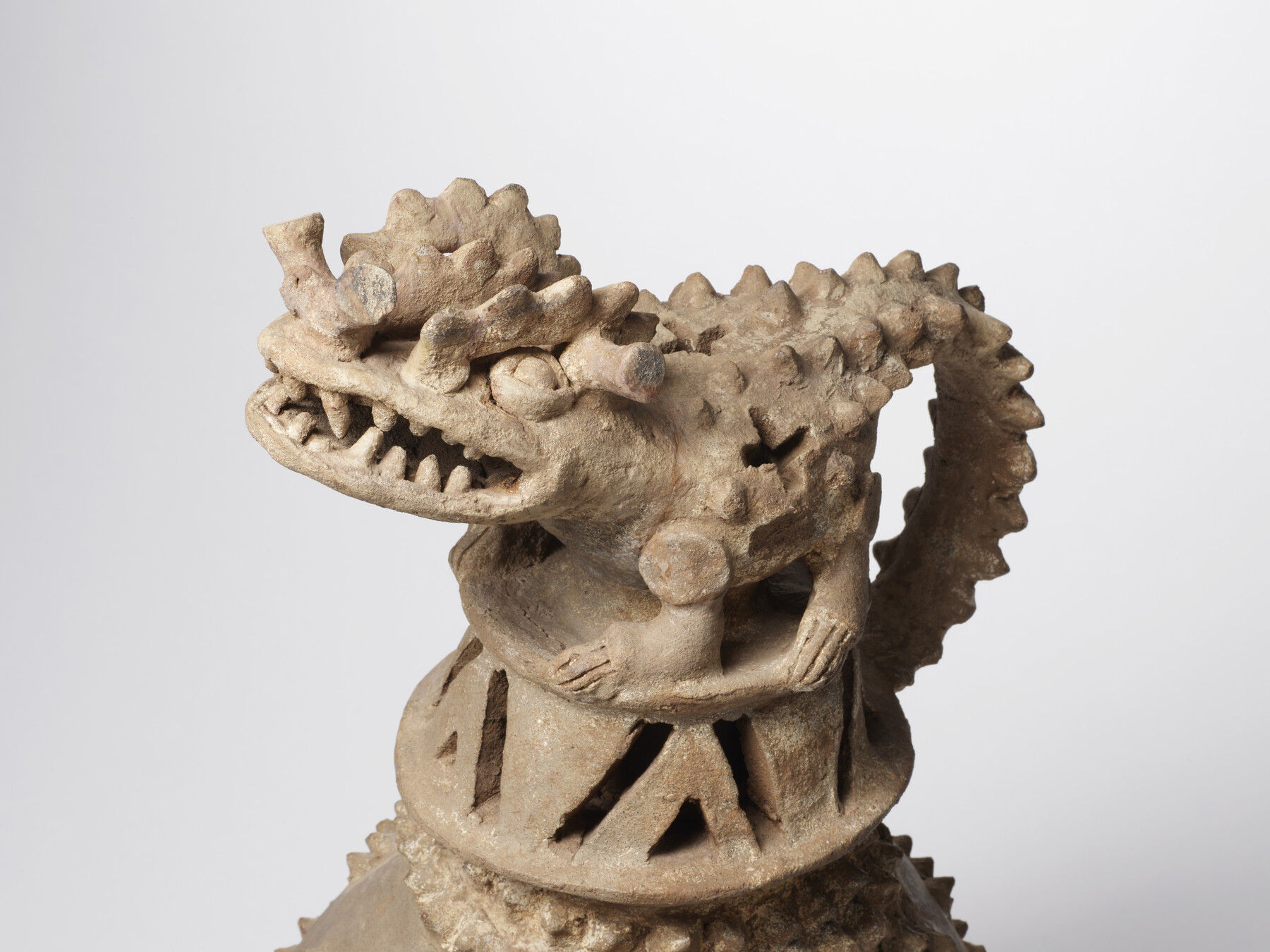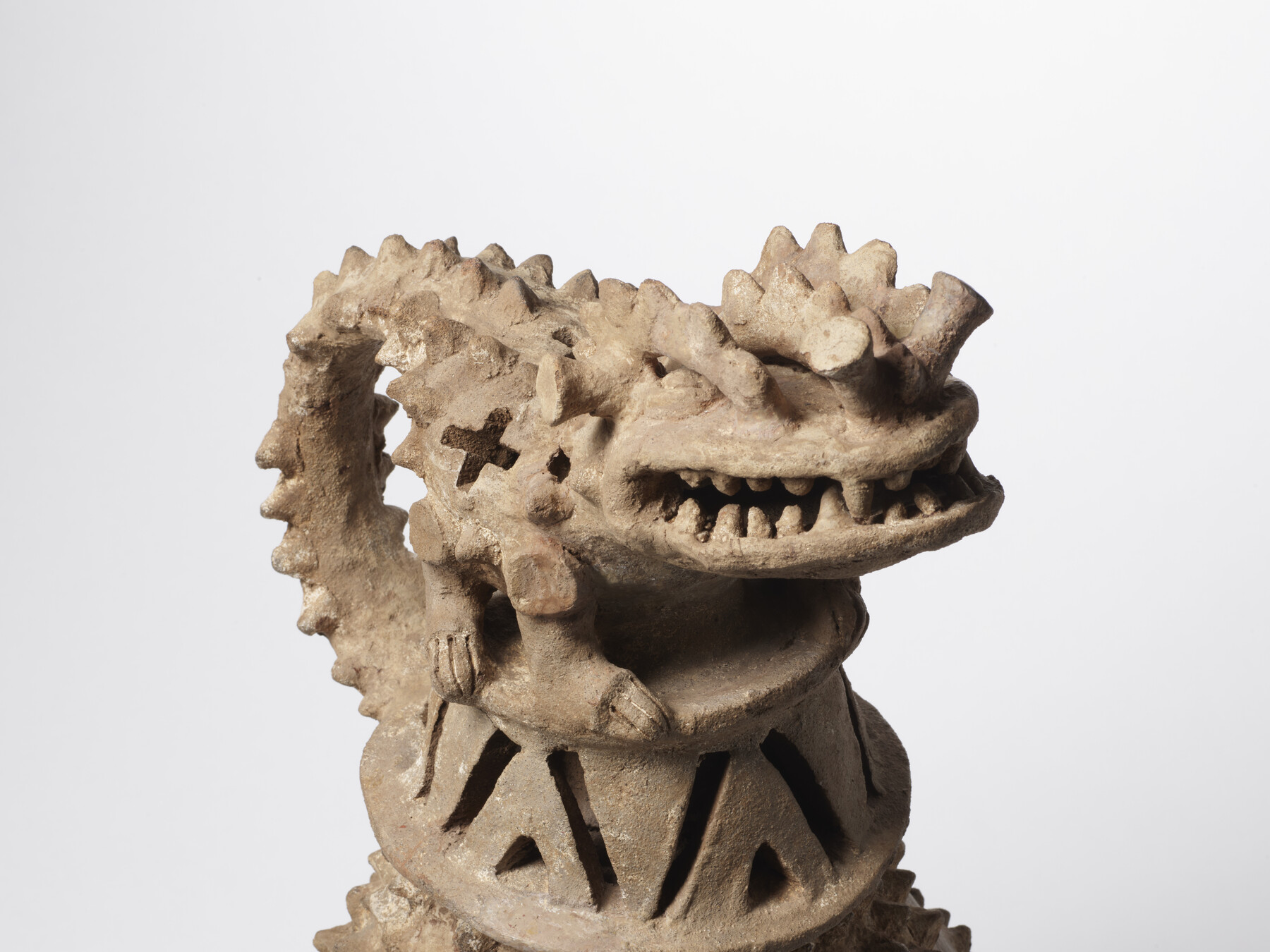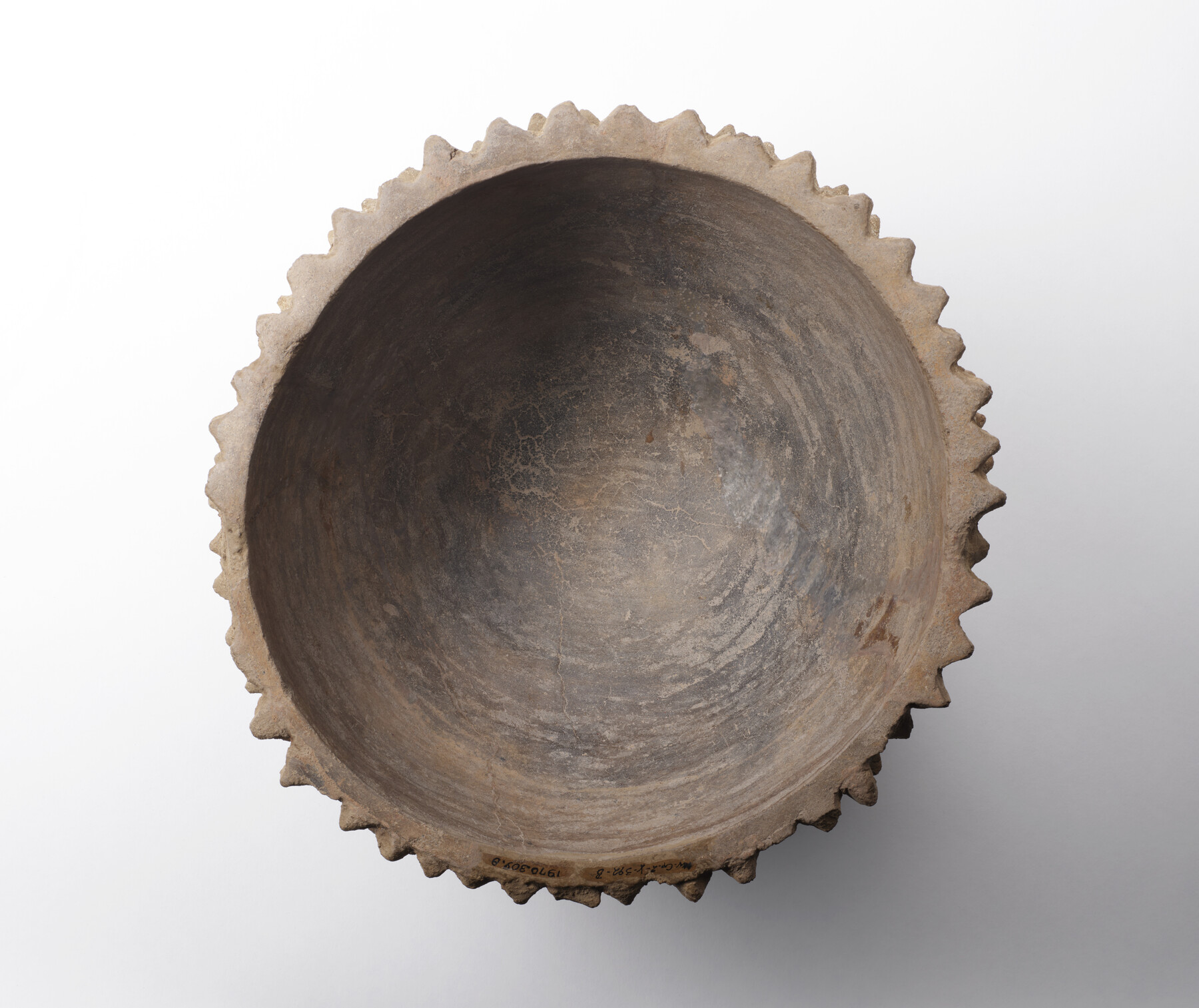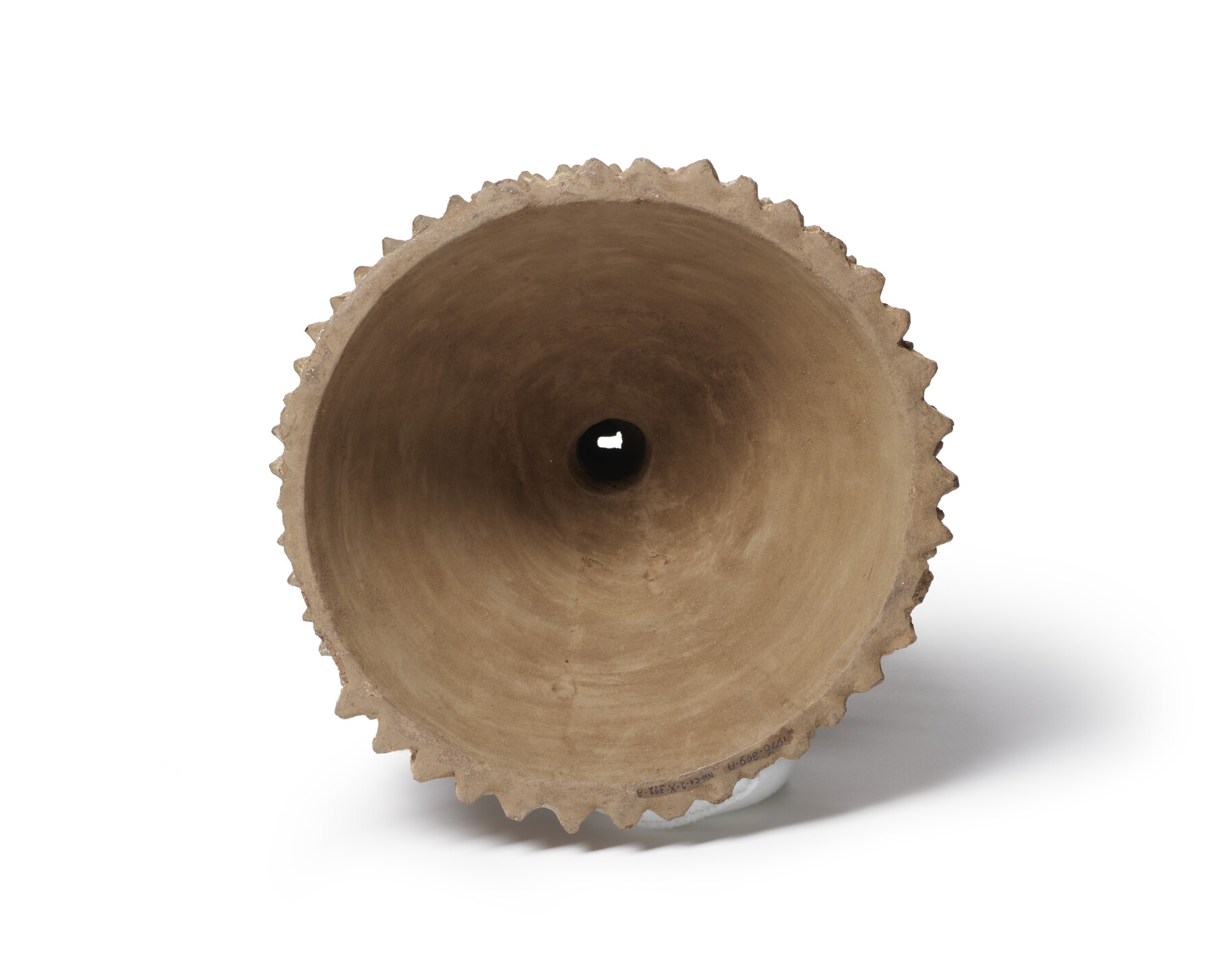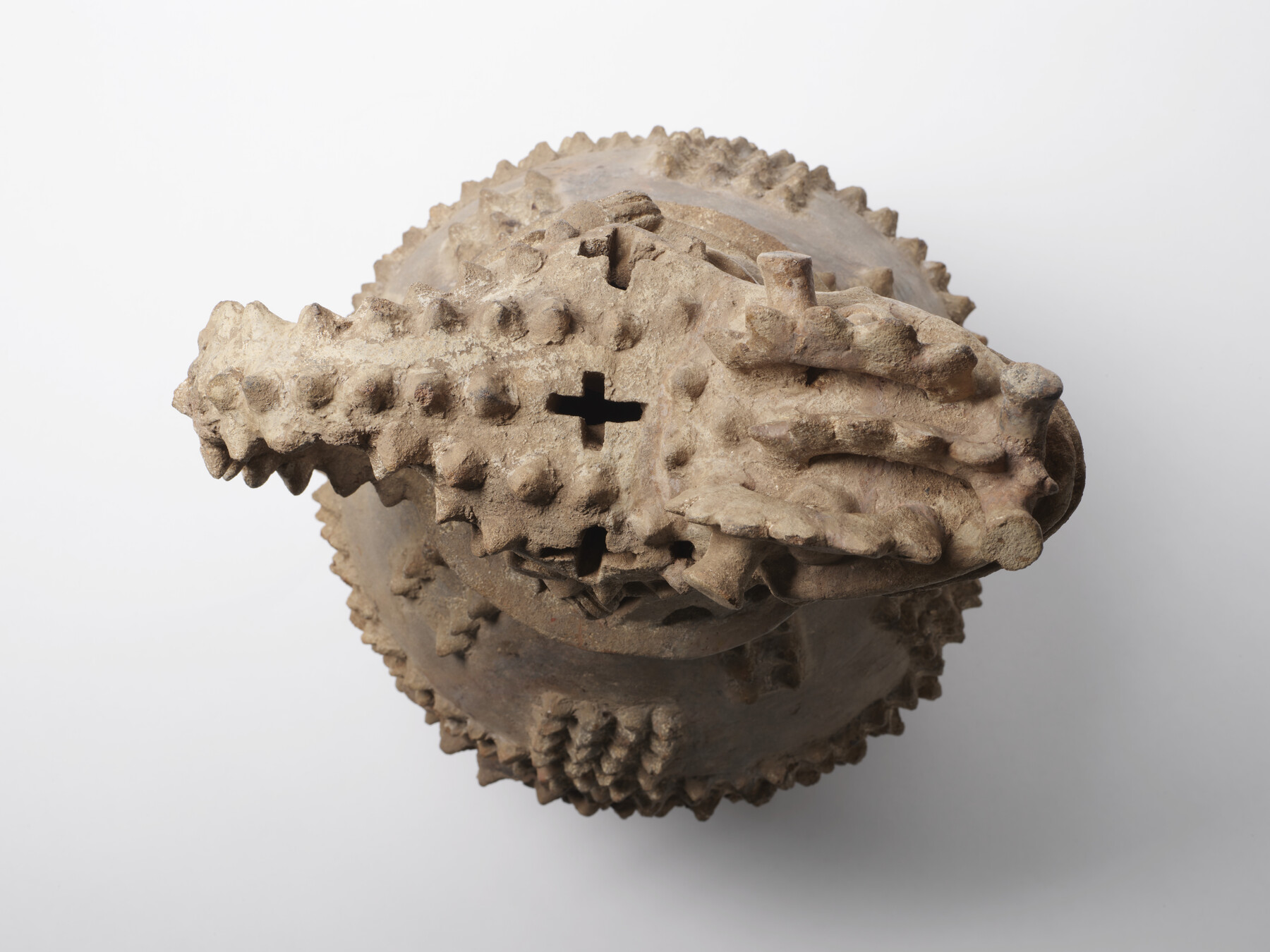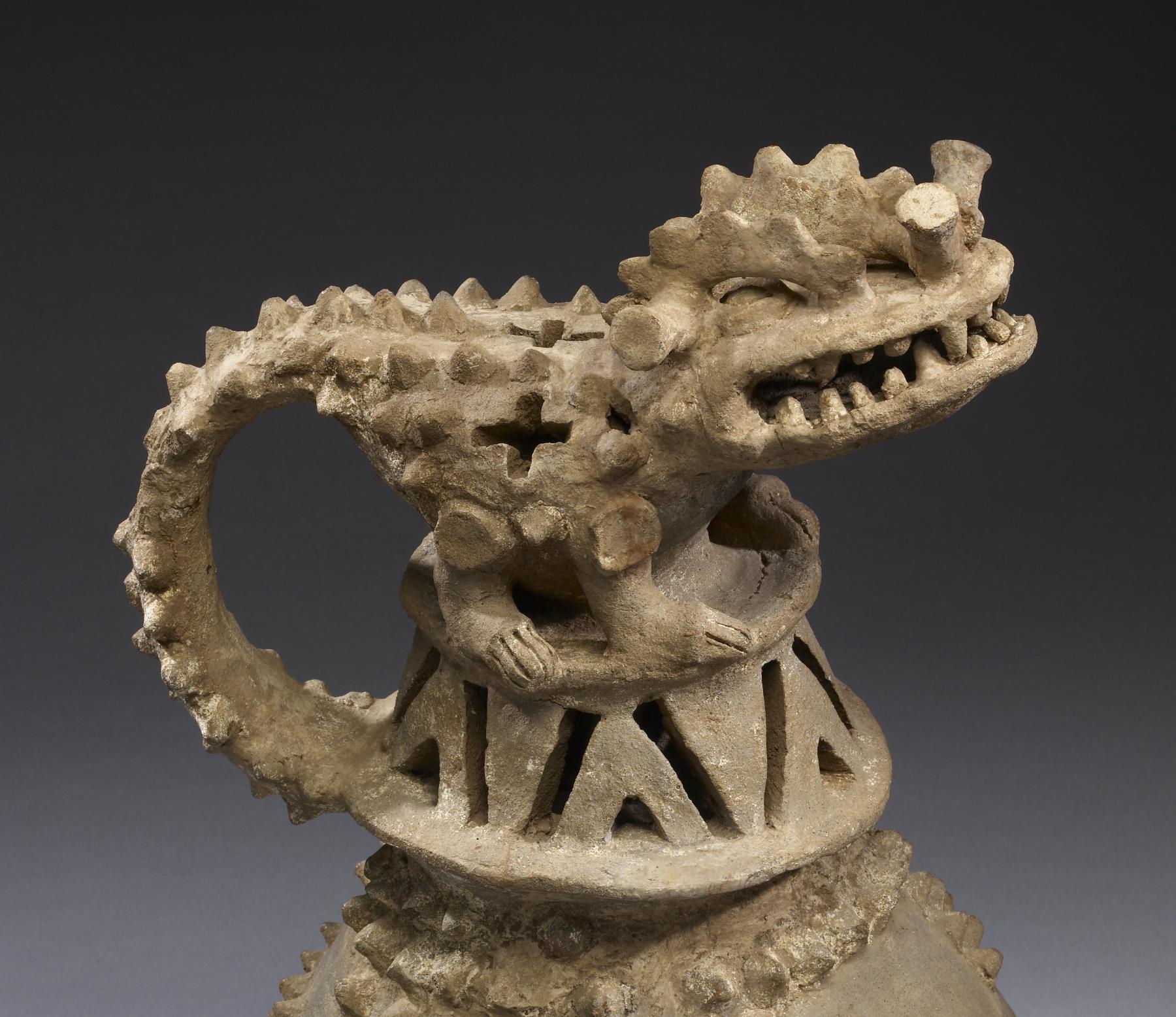Crocodile Effigy Incense Burner
(Ancient Americas )
The burning of incense was an important part of myriad rituals throughout Mesoamerica and Central America. Smoke served to alternatively screen and reveal the activities of the sacred rite, the magical smoke being present and suddenly disappearing as it rises to the heavens. The incense, typically pungent copal from a pine tree, stimulated the participants' olfactory sense. Together, the smoke's effects call to mind the ethereal world of the supernatural. This incense burner is topped with the portrayal of a caiman or other member of the Crocodylidae family, one of the frequent animal spirit forms of Central American shamans. Its particularly aggressive stance may refer to the practitioner's battle against supernatural forces. Many such incense burners were found ritually broken on the slopes of a principal volcano on the island of Ometepe in Lake Nicaragua, the incense burner lid with its smoke issuing from the top mimicking an active volcano. Among peoples from southern Nicaragua to Mesoamerica the earth was likened to the back of a crocodile floating in the primordial sea, its dorsal scutes being the volcanic north-south backbone that defines the continents of the Western Hemisphere. This incense burner, then, constitutes a profound ritual vessel pertaining to the transition from the natural to the supernatural realms and a symbolic model of the ancient Costa Rican world.
Provenance
Provenance (from the French provenir, 'to come from/forth') is the chronology of the ownership, custody, or location of a historical object. Learn more about provenance at the Walters.
Ron Messick Fine Arts, Santa Fe, New Mexico [date and mode of acquisition unknown]; John G. Bourne, 1990s, by purchase; Walters Art Museum, 2009, by gift.
Exhibitions
| 2012-2013 | Exploring Art of the Ancient Americas: The John Bourne Collection Gift. The Walters Art Museum, Baltimore; Frist Center for the Visual Arts, Nashville. |
| 1998-2008 | Art of Ancient America, 1500 B.C.-1400 A.D.. Museum of New Mexico, Santa Fe. |
Geographies
Costa Rica, Guanacaste, Greater Nicoya (Place of Origin)
Measurements
Overall H: 23 11/16 x W: 12 5/8 x D: 12 9/16 in. (60.1 x 32 x 31.9 cm);
Top H: 16 7/16 x W: 12 5/8 x D: 12 3/16 in. (41.8 x 32 x 30.9 cm);
Base H: 7 3/16 x Diam: 12 9/16 in. (18.3 x 31.9 cm)
Credit Line
Gift of John Bourne, 2009
Location in Museum
Charles Street: Second Floor: Latin American Art / Arte Latinoamericano
Accession Number
In libraries, galleries, museums, and archives, an accession number is a unique identifier assigned to each object in the collection.
In libraries, galleries, museums, and archives, an accession number is a unique identifier assigned to each object in the collection.
2009.20.45

